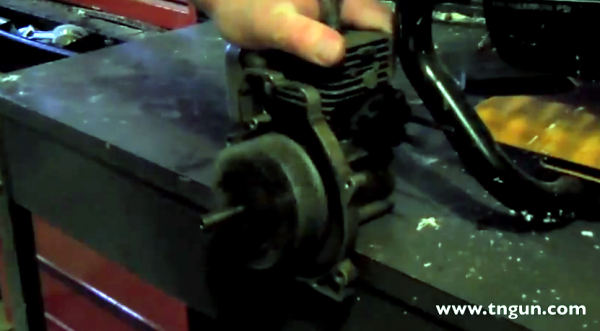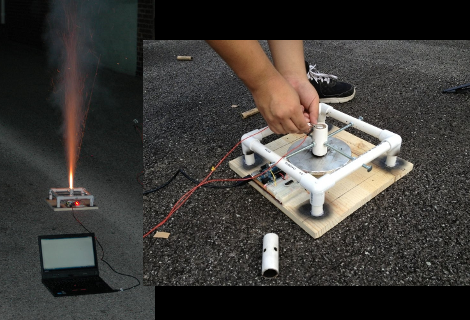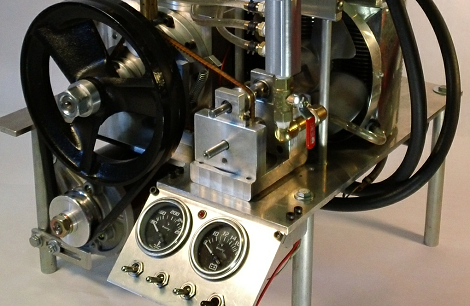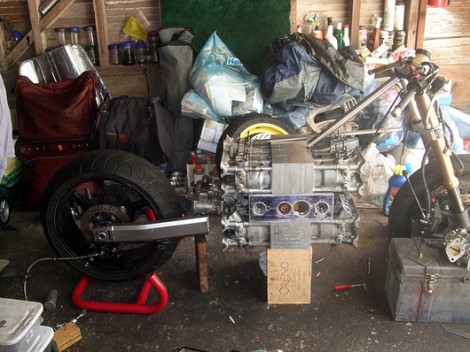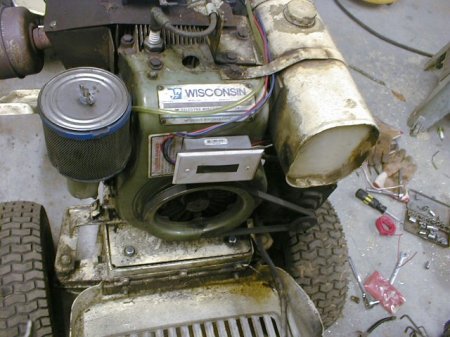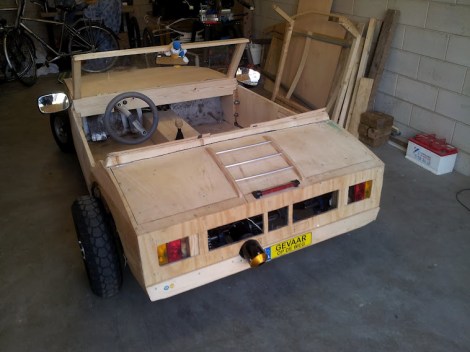
From this view we would think the handmade wooden roadster (translated) was street legal. But it’s missing a few items that are required to take it out on the highway. The teenagers that built it were pulled over the other night (translated) and cited for driving without a speedometer or side indicator lights.
The image above shows the mark II of their design. Sadly they crashed the first version, which gave them a chance to overhaul the entire design. Now they have a proper frame which was welded from steel square tube. It’s got an impressive rack and pinion steering system and shock absorbing suspension in the front and rear. A dirt bike engine mounted behind the seats drives the rear wheels via a chain. They’ve used an Arduino to add turn signals, and have headlights for night driving.
[Gerrit] sent in the tip on this one and he figures that with an Arduino already being used in the vehicle it should be a quick fix to add a speedometer and get back on the road.

